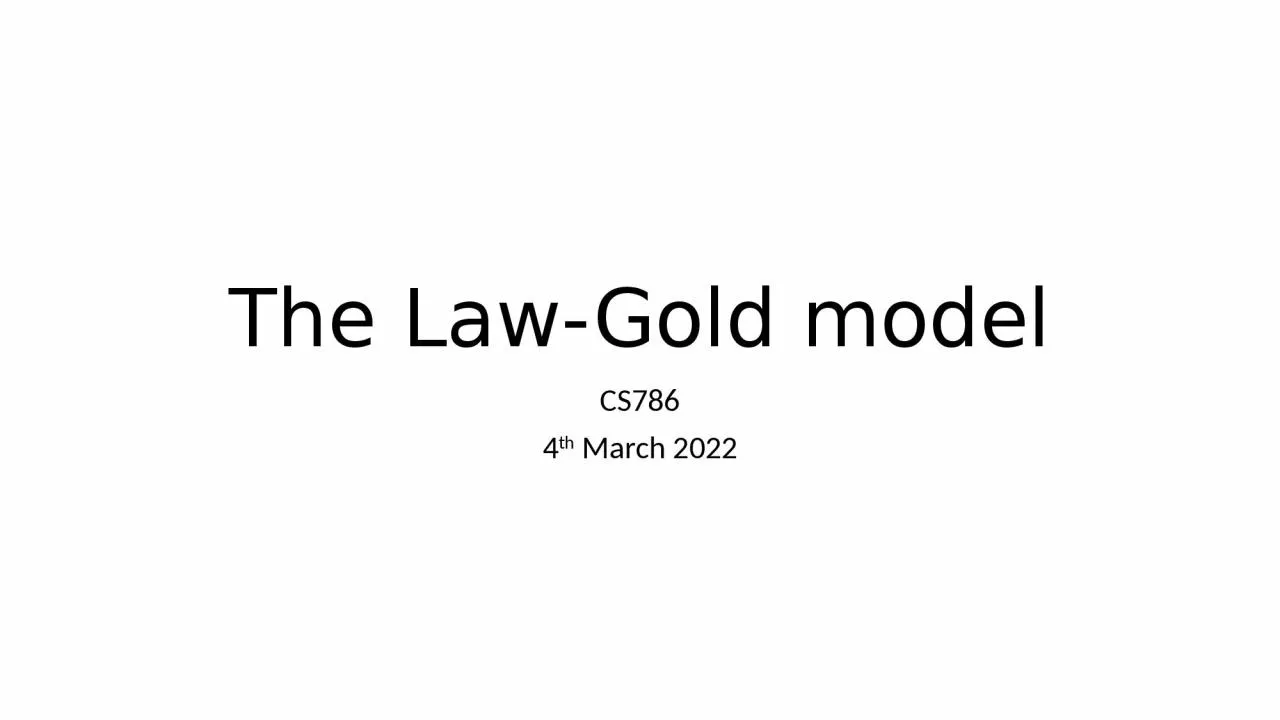

4 th March 2022 The model Law amp Gold 2009 Sensory representation MT modeled as a population of 7200 neurons 200 for each of 36 evenly spaced directions in the 2D plane Trialbytrial stimulus responses fixed using neuronal data ID: 934721
Download Presentation The PPT/PDF document "The Law-Gold model CS786" is the property of its rightful owner. Permission is granted to download and print the materials on this web site for personal, non-commercial use only, and to display it on your personal computer provided you do not modify the materials and that you retain all copyright notices contained in the materials. By downloading content from our website, you accept the terms of this agreement.
Slide1
The Law-Gold model
CS786
4
th
March 2022
Slide2The model
(Law & Gold, 2009)
Slide3Sensory representation
MT modeled as a population of 7200 neurons
200 for each of 36 evenly spaced directions in the 2D plane
Trial-by-trial stimulus responses fixed using neuronal data
Slide4Individual neuron model
Each neuron’s response to a given stimulus modeled as Gaussian with mean
m
k
0
is spiking response at 0% coherence
k
n
is spiking response at 100% coherence in null directionkp is spiking response at 100% coherence in preferred direction COH is coherence as a fraction Θ is the neuron’s preferred direction
Slide5Interneuron correlations
Neurons with shared direction tuning should fire frequently together
Equally excitable neurons should fire frequently together
So neuron spiking rates should be correlated, based on similarity in
directional tuning
motion sensitivity
Slide6Decision variable construction
Variable constructed by pooling neuronal responses
Slide7Pooled neuronal responses
Construct a 7200 bit vector
x
Here, r
=
U
z
, z ~ N(0,1) and U is the square root of the correlation matrix
All neuron responses pooled to yield decision variable corrupted by decision noise
Slide8The magic sauce: weight learning
Using reinforcement learning
Slide9Reinforcement learning in neurons
Prediction error
C is -1 for left, +1 for right
r is whether there was success or not on the trial
E[r] is the predicted probability of responding correctly given the pooled MT responses y
x
is the vector of MT responses
E[x] is the vector of baseline MT responses
M = 1, n = 0 for the most successful rule
Slide10Good fit for the behavioral data
Slide11How did the tuning weights vary?
Graph plots neuron weights on y-axis and directional tuning on x-axis
This plot shows the optimal weights to discriminate motion directions 180 degrees apart
Some neurons (not all) learn that direction 0 should get high positive weights and direction 180 should get high negative weights
Slide12Model LIP headed the right way
Slide13Fine discrimination task
Slide14Perceptual learning is hyper-specific
Training with horizontal
Vernier
scales can improve discrimination threshold 6-fold
But horizontal training does not translate to vertical direction
Slide15Training specificity predictions
Infrequently seen directions show less learning
Slide16Model predicts differential sensitization
Sensory-motor association
Perceptual sensitivity
Slide17The model
(Law & Gold, 2009)
Slide18(Gold & Ding, 2013)
Perceptual learning as decision-making